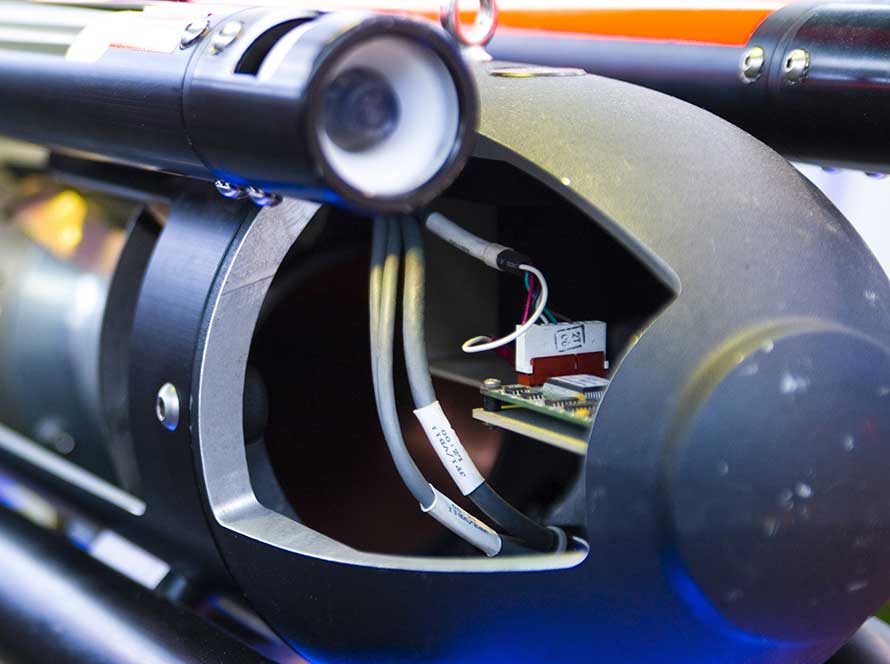Microelectronics and quantum computing represent two of the most transformative fields in modern technology. While microelectronics has been the backbone of the digital revolution, enabling the proliferation of computers, smartphones, and countless other devices, quantum computing promises to revolutionize how we process information, solve complex problems, and understand the universe. The intersection of these two fields is paving the way for unprecedented advancements and opportunities. This article explores the relationship between microelectronics and quantum computing, highlighting their synergy and potential impacts on various industries.
The Evolution of Microelectronics
Microelectronics involves the design, manufacture, and application of tiny electronic components, such as transistors, capacitors, and integrated circuits. These components form the basis of all modern electronic devices, enabling them to perform a vast array of functions with remarkable efficiency and speed.
Over the decades, the microelectronics industry has followed Moore’s Law, which predicts the doubling of transistors on a microchip approximately every two years. This trend has led to continuous improvements in processing power, miniaturization, and energy efficiency. However, as we approach the physical limits of silicon-based technologies, further advancements in traditional microelectronics are becoming increasingly challenging.
The Rise of Quantum Computing
Quantum computing harnesses the principles of quantum mechanics to process information in fundamentally new ways. Unlike classical computers, which use bits to represent information as either 0 or 1, quantum computers use quantum bits, or qubits, which can exist in multiple states simultaneously thanks to superposition. Additionally, qubits can be entangled, meaning the state of one qubit can depend on the state of another, no matter the distance between them.
These properties allow quantum computers to perform certain calculations exponentially faster than classical computers. Potential applications include cryptography, drug discovery, optimization problems, and simulations of quantum systems, which are currently beyond the reach of even the most powerful classical supercomputers.
Synergy Between Microelectronics and Quantum Computing
The development of quantum computing relies heavily on advancements in microelectronics. Here are some key areas where the two fields intersect:
- Qubit Control and Readout:
- Quantum computers require precise control over qubits, which is achieved using advanced microelectronic components. These include microwave circuits, cryogenic controllers, and high-frequency signal processors that can operate at extremely low temperatures necessary for maintaining qubit coherence.
- Fabrication Techniques:
- The fabrication of qubits and quantum processors leverages microelectronics manufacturing techniques, such as lithography and deposition. The expertise and infrastructure developed for microelectronics are essential for producing high-quality quantum devices with high yields.
- Integration with Classical Systems:
- Quantum computers will not operate in isolation but will work alongside classical computers. Efficient integration of quantum processors with classical control systems, error correction, and data transfer relies on sophisticated microelectronic interfaces and communication protocols.
- Miniaturization and Scalability:
- As with traditional computing, the scalability of quantum computers depends on the ability to miniaturize components and integrate large numbers of qubits onto a single chip. Advances in microelectronics are crucial for achieving the high-density integration required for practical quantum computing.
Challenges and Future Directions
While the potential of quantum computing is immense, several challenges must be addressed to realize its full capabilities:
- Qubit Stability:
- Qubits are highly sensitive to their environment and can easily lose their quantum state through decoherence. Developing robust error correction techniques and improving qubit coherence times are critical research areas.
- Manufacturing Precision:
- Quantum devices require unprecedented levels of precision and control during fabrication. Ensuring uniformity and reducing defects in qubit production are significant challenges that require advances in microelectronics manufacturing.
- Cryogenic Systems:
- Many quantum computing platforms, such as superconducting qubits, operate at cryogenic temperatures. Developing reliable and efficient cryogenic systems that can be integrated with quantum processors is essential.
- Interdisciplinary Collaboration:
- Quantum computing sits at the intersection of physics, computer science, and engineering. Collaborative efforts across these disciplines, supported by advancements in microelectronics, are necessary to overcome technical barriers and accelerate progress.
Impact on Industries
The convergence of microelectronics and quantum computing is expected to have profound impacts across various industries:
- Healthcare:
- Quantum computing can revolutionize drug discovery and personalized medicine by enabling the simulation of complex molecular interactions, leading to faster and more effective treatments.
- Finance:
- Financial institutions can leverage quantum algorithms for risk analysis, portfolio optimization, and fraud detection, offering more accurate and efficient solutions.
- Energy:
- Quantum computing can optimize energy distribution, improve battery technologies, and enhance the efficiency of renewable energy sources, contributing to a more sustainable future.
- Materials Science:
- The ability to simulate and understand the properties of new materials at the quantum level can lead to the development of stronger, lighter, and more efficient materials for various applications.
The synergy between microelectronics and quantum computing holds the promise of ushering in a new era of technological advancement. As researchers and engineers continue to push the boundaries of what is possible, the integration of these fields will unlock unprecedented capabilities, transforming industries and society as a whole. The journey toward practical and scalable quantum computing is challenging, but with the continued evolution of microelectronics, the future looks exceptionally bright.

